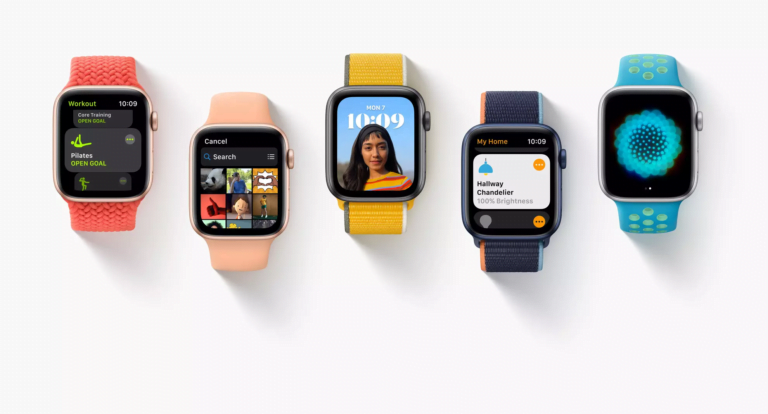The wearable device market continues to expand from Fitbits that track your heart rate and physical activity to Apple Watch products that promise stylish wearables with fine-tuned sensors. As more and more consumers understand how wearables can promote physical activity and provide benefits that non-smartwatches can’t, buyers will likely continue to engage with wearables.
So, what exactly does the future of wearable technology look like? Will wearables become more discrete, or will wearable device brands like the Apple Watch continue to develop precision sensors and data collection algorithms? And what about virtual reality and products like Google Glass? To understand what the future of wearable technology holds, here’s what you need to know.
Wearable devices will be less visible.
Whether it’s a smartwatch, a ring, or a pair of glasses, most wearers don’t want their wearable devices to stick out too much. So instead of a product looking visibly like fitness trackers or smartwatches, many wearers will be able to select more discrete options to conceal this advanced technology in plain sight. This is a powerful theft deterrent and can also empower wearer safety. Some safety wearables look like simple rings, necklaces, or other accessories, but they’re mobile devices that can drop your location to your loved ones if you feel that you’re in danger.
This can empower the wearer and also means that modern wearable devices are generally more stylish. While a tech-heavy smartwatch might look cool, it might not be the best wristwatch to wear to the gym or out on a date. Whether you want your wearable devices to coordinate with your outfits or blend in with your ensemble discretely, there are likely to be more market options to meet your specific needs.
Virtual and mixed-reality headsets will continue to gain traction.
While virtual reality is widespread across the United States, there hasn’t been one major catalyst that’s solidified the tech’s market position. While it’s clear that virtual reality has advanced technology implications, it’s hard to see small businesses adopting VR headsets and other wearable tech due to higher upfront costs; however, virtual reality wearables have significant potential for gamers, medical professionals, and hobbyists alike.
VR applications enable wearers to interact with digital assets and to experience greater situational immersion. Though it hasn’t taken off in the same way that 3D films tend to every few years, the industry’s vital signs show no signs of slowing down. Between headsets, eyeglasses, and augmented reality applications, mixed-reality products will likely continue to grow.
Currently, VR is somewhat of a niche interest. Though major brands like AMC have their Dreamscape showings and console gamers eagerly await more information about PSVR2, virtual reality tends to attract more hobbyists. However, as programmers, developers, and innovators continue to refine algorithms, develop new computer science techniques, and invest in emerging technology, it’s clear that wearable virtual reality technology will continue to expand and attract new consumers and creators alike.
Wearable technology will have expanded medical applications.
From electrocardiograms (ECGs) to blood pressure sensors, the healthcare industry frequently depends on wearable sensors to improve patient outcomes. Even if providers don’t have technology backgrounds, wearable sensors can help facilitate big data eCollection and parse insights from IoT devices. So whether you’re using wearable sensors and electronic devices for data mining or to track COVID-19 behaviors, big data eCollection can help you filter out unnecessary information, gain actionable insights, and implement key technology that can go a long way toward improving primary and secondary outcomes.
Whether you’re using wearables or Bluetooth garments to track heart rate variability, average heart rate, or physical activity and weight change, these new technologies can help you filter information to guarantee data relevance. In addition, integrating advanced technologies like artificial intelligence and machine learning makes it much easier to improve main outcomes and establish secondary goals and milestones for your brand.
Wearable technology may even progress to embedded technology. For example, suppose medical professionals (with an insurer’s blessing, of course) can embed sensors under the skin. In that case, they may conduct a systematic review of a patient’s body and collect critical data that could ensure more substantial outcomes. For medical professionals, researchers, and insurers, this could help us understand how drugs impact the body and how advanced technology causes our systems to react, and enable scientists to conduct more thorough blood analyses.
Wearables provide authentication options.
One reason wearable technology has so many consumers excited is that it promises more excellent authentication controls. Authentication can limit access points, help secure your home, and even enable you to shop at a store without going through the checkout process. Disney even invests in wearable inventions that allow visitors and tourists to easily access their rooms, rides, and hotel or resort amenities. Though not every company on the planet has Disney’s business methodologies, background, or resources, even smaller brands can apply similar concepts when they develop wearable garments and accessories.
These authentication options even make it easier for users to monitor their homes. For instance, Nest home security products have both “Home” and “Away” modes that update when a user’s mobile device is close to the security doorbell or cameras. In addition, with location-based parameters, you can have your security system send you notifications or text messages if it spots certain events or motion triggers. This helps with situational intervention and can even keep your home safer.
Beyond these more practical applications, other research groups and businesses are finding ways to develop intelligent tattoos and other authentication-centric wearable technology use cases. Smart tattoos essentially function as high-tech temporary tattoos that can transfer information to scanners, mobile devices, and smartphones. Though wearable authentication technology hasn’t taken off for the general public, COVID-19’s Delta intervention may cause more brands to seriously consider these options for enhanced event security and on-premises security.
Wearables will likely have better batteries.
Currently, many end-users and consumers have similar qualms with their wearable tech: The batteries aren’t much to write home about. Many wearable devices have limited battery life, making it challenging to get a full day’s use out of your devices. Unless you want to set up a dedicated charging station in your home, likely, you’re also interested in better wearable device batteries.
There are a few common causes of shorter battery life. For starters, some smartwatches and wearable devices require a great deal of processing power. This can sap the wearable tech’s battery and make it harder for you to keep your devices topped up. In addition, internet and Bluetooth connectivity can also drain battery life. Though you can indeed turn off your Wi-Fi or switch your Bluetooth connection to save battery life, you shouldn’t have to compromise utility for longevity. Otherwise, you’re not getting the most value out of your wearable tech. Luckily, plenty of wearable device manufacturers know that this is an existing problem and take steps to remedy it with upcoming designs.
Some manufacturers have also proposed concepts like energy harvesting and wireless charging. In the future, it’s possible that specific wearable tech could depend on solar power or the wearer’s body heat to keep a device working. Though it’s uncertain whether computer science pros, programmers, and researchers will be able to make this technology wildly available, it remains a popular request among smartwatch and wearable device consumers. It’s clear that whoever can provide a more convenient, on-the-go charging option, though, is likely to reap plenty of royalty fees.
When will we see new wearable devices?
For the impatient consumer, you’re in luck. The wearable device industry continues to expand, attract new users, and gain word-of-mouth referrals. This is necessary for a budding market that’s open to innovative catalysts and growth opportunities. In addition, a systematic review of the current market shows that top brands like Fitbit, Apple, and Samsung continue to refine their wearable device offerings and implement new features, quality-of-life upgrades, and modern conveniences that wearable tech enthusiasts crave. Plus, many manufacturers like to refresh their product lines yearly, so you rarely have to wait too long to see the latest advanced technology and wearable device integration.
Of course, this makes the wearable device industry particularly exciting. While many hesitant consumers are still on the lookout for the ultimate killer app, the current market forecasts show that there’s plenty of growth in store for wearable device enthusiasts. Whether you’re interested in how wearables can track physical activity and lead to lifestyle interventions or how they can send you alerts and help you take phone calls on the go, some devices can meet your needs. And, as the wearables market continues to grow, more brands will start to offer budget-friendly options, so you don’t have to pay hundreds of dollars or sign up for a payment plan to stay current. So, while it’s impossible to guarantee, the future of the wearables industry looks bright.





